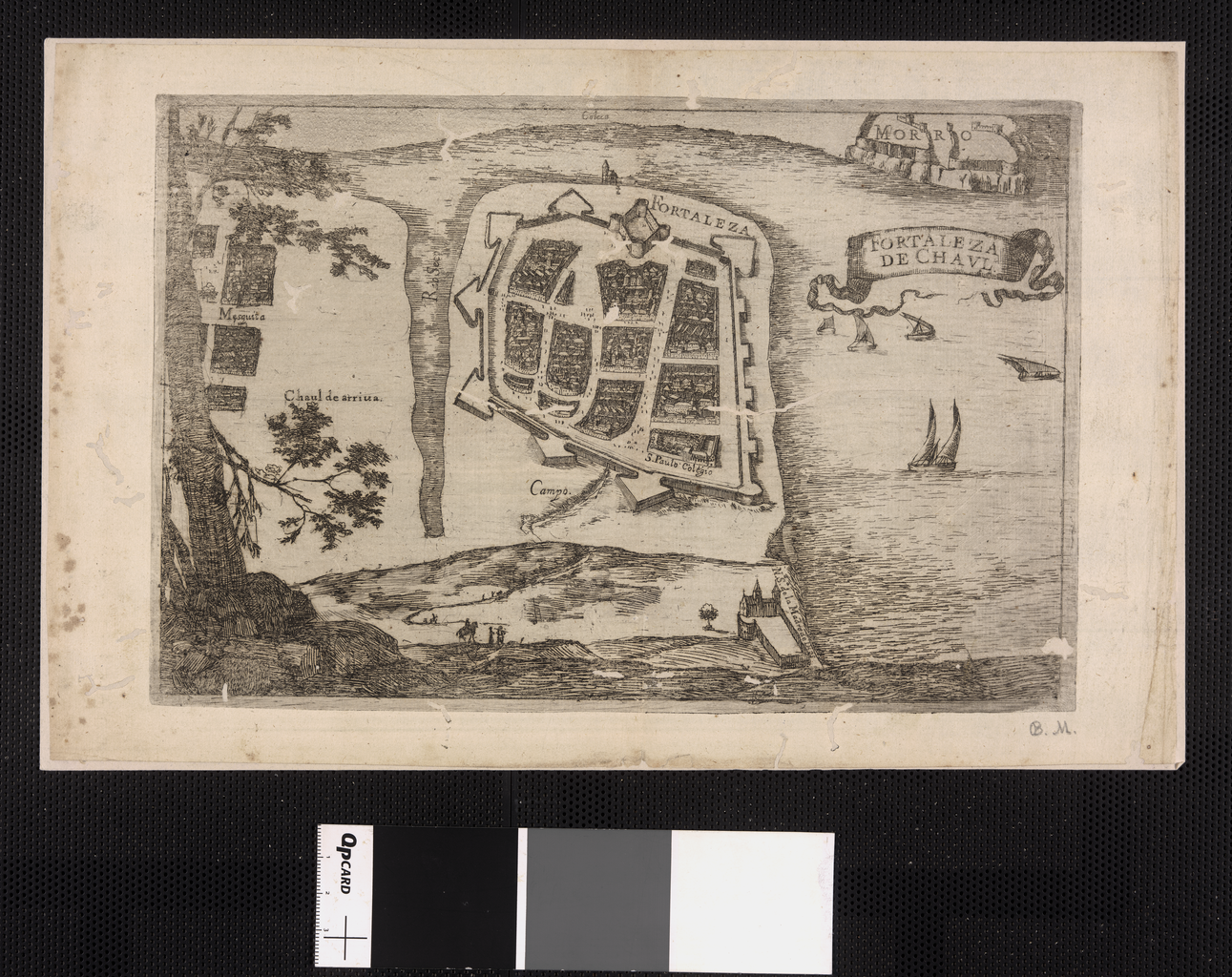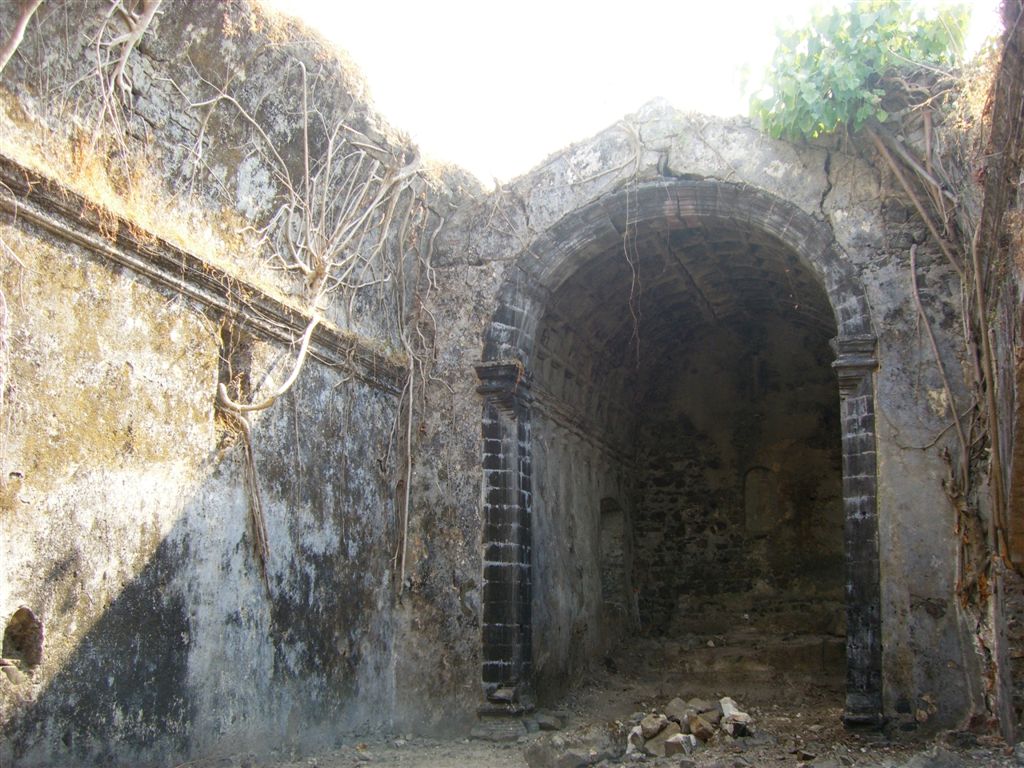|
Revdanda
Revdanda is a village near Alibaug, Raigad District, Maharashtra. It's the site of the medieval 'Chaul harbor'. Directions India. It is connected through a coastal highway (Sagari Mahamarg) away from Alibag, away from Mumbai, 37km away from Roha and 33km away from Murud. Until a few years ago the coastal road that goes south from Alibag used to terminate at Revdanda where it encountered the Kundalika creek. A bridge now spans the creek and the whole stretch southward of Revdanda up to Murud-Janjira has now become accessible. Part of the town is situated within the premises of Revdanda fort, an old Portuguese fort. History The history of Revdanda and the surrounding villages are quite similar to Chaul, due to their close proximity to the town. Muslim Rule In 1490 the area fell under the Ahmadnagar Sultanate. Portuguese Era In 1505, Portuguese commander Dom Lourenço de Almeida defeated the Muslims and conquered the area around Chaul. In 1508, Venetian mercenaries alo ... [...More Info...] [...Related Items...] OR: [Wikipedia] [Google] [Baidu] |
Battle Of Bassein
The Battle of Vasai or the Battle of Bassein was fought between the Marathas and the Portuguese rulers of Vasai ( Portuguese, ''Baçaim''; English, ''Bassein''), a town lying near Mumbai (Bombay) in the Konkan region of present-day state of Maharashtra, India. The Marathas were led by Chimaji Appa, a brother of Peshwa Baji Rao I. Background The ''Provincia do Norte'' (Province of the North) region ruled by the Portuguese included not just the town of Baçaim but also areas far away as Bombay, Thana, Kalyan, Chaul and Revdanda. Baçaim is located about 50 kilometers north of Bombay, on the Arabian Sea. Baçaim, was an important trading center, and its sources of wealth was trade in horses, fish, salt, timber, basalt and granite, as well as shipbuilding. The town was a significant trading center long before the Portuguese arrived. Ancient Sopara was an important port that traded with the Arabs and Greeks, Romans and Persians. It was also a wealthy agricultural r ... [...More Info...] [...Related Items...] OR: [Wikipedia] [Google] [Baidu] |
Chaul
Chaul is a historic town located in the Raigad district of Maharashtra, India. The Korlai Fort is located nearby. History The town was famous for cotton manufactured goods in the 15th and 16th century, According to Varthema, Chaul was producing a lot of cotton stuffs. Even Portuguese explorer and writer Duarte Barbosa conceded fame of the Chaul for cotton materials. See also * Battle of Diu The Battle of Diu was a naval battle fought on 3 February 1509 in the Arabian Sea, in the port of Diu, India, between the Portuguese Empire and a joint fleet of the Sultan of Gujarat, the Mamlûk Burji Sultanate of Egypt, and the Zamor ... * Revdanda References External links The Portuguese Fort of Chaul, India Chaul, a historical port {{Authority control Former Portuguese colonies Populated places established in 1521 Cities and towns in Raigad district 1521 establishments in the Portuguese Empire ... [...More Info...] [...Related Items...] OR: [Wikipedia] [Google] [Baidu] |
Korlai Fort
Korlai Fort is a colonial fort in the Raigad district of Maharashtra, India. Formerly a part of the Chaul in Portuguese India, the structure is a specimen of Portuguese colonial architecture. It was built as a companion to the fort at Chaul, at this strategic position the Portuguese could use it to defend their province which stretched from Korlai to the Fort Bassein. Vestiges of the Portuguese occupation are manifested in the distinct dialect of the Korlai villages inhabitants which is a Luso-Indian creole called Korlai Portuguese Creole. History This fort was built in 1521 by the Portuguese with the permission of the Ahmednagar sultanate. In 1521, taking advantage of the confusion in the aftermath of the death of the Burhan Nizam the Portuguese tried to take over the fort. However the sultan retaliated and sent some of his best men to reclaim the fort. Subsequently, a truce was reached in which the Ahmednagar sultanate occupied the island and no further fortification of t ... [...More Info...] [...Related Items...] OR: [Wikipedia] [Google] [Baidu] |
Alibaug
Alibag, also known as Alibaug (Pronunciation: �libaːɡ, is a coastal town and a municipal council in Raigad District of Maharashtra, India. It is the headquarters of the Raigad district and is south of the city of Mumbai. Alibag is part of the Mumbai Metropolitan Region and is situated at a distance of about 96 km from Mumbai and 143 km from Pune. Alibag is a holy place for Goddess Shree Padmakshi Renuka, and thousands of people go there to worship every day. History Alibag and its surrounding villages are the historic hinterlands of Bene Israel Jews. According to Indian Jewish historian Esther David, Jews arrived in the region over 2000 years ago, escaping persecution from the Roman Empire, when their ship wrecked here. As they got into the business of oil-pressing and plantations, continued practising Sabbath and took holidays on Saturday, they came to be known as 'Shanvar-telis' There is a synagogue named 'Magen Aboth synagogue' in the "Israel Alley" (Mar ... [...More Info...] [...Related Items...] OR: [Wikipedia] [Google] [Baidu] |
Mamluk Sultanate
The Mamluk Sultanate ( ar, سلطنة المماليك, translit=Salṭanat al-Mamālīk), also known as Mamluk Egypt or the Mamluk Empire, was a state that ruled Egypt, the Levant and the Hejaz (western Arabia) from the mid-13th to early 16th centuries. It was ruled by a military caste of mamluks (manumitted slave soldiers) headed by the sultan. The Abbasid caliphs were the nominal sovereigns. The sultanate was established with the overthrow of the Ayyubid dynasty in Egypt in 1250 and was conquered by the Ottoman Empire in 1517. Mamluk history is generally divided into the Turkic or Bahri period (1250–1382) and the Circassian or Burji period (1382–1517), called after the predominant ethnicity or corps of the ruling Mamluks during these respective eras.Levanoni 1995, p. 17. The first rulers of the sultanate hailed from the mamluk regiments of the Ayyubid sultan as-Salih Ayyub (), usurping power from his successor in 1250. The Mamluks under Sultan Qutuz and Baybars rou ... [...More Info...] [...Related Items...] OR: [Wikipedia] [Google] [Baidu] |
Konkan
The Konkan ( kok, कोंकण) or Kokan () is a stretch of land by the western coast of India, running from Damaon in the north to Karwar in the south; with the Arabian Sea to the west and the Deccan plateau in the east. The hinterland east of the coast has numerous river valleys and riverine islands among the hilly slopes leading up into the tablelands of the Deccan. The region has been recognised by name, since at least the time of Strabo in the third century C.E., and was a thriving mercantile port with Arab tradesmen from the 10th century. The best-known islands of Konkan are Ilhas de Goa, the site of the Goa state's capital at Panjim, and the seven islands of Bombay, on which lies the capital of the State of Maharashtra. Definition Historically, the limits of Konkan have been flexible, and it has been known by additional names like " Aparanta" and "Gomanchal", the latter being defined as the coastal area between the Daman Ganga River in the north and t ... [...More Info...] [...Related Items...] OR: [Wikipedia] [Google] [Baidu] |
Marathi People
The Marathi people (Marathi: मराठी लोक) or Marathis are an Indo-Aryan ethnolinguistic group who are indigenous to Maharashtra in western India. They natively speak Marathi, an Indo-Aryan language. Maharashtra was formed as a Marathi-speaking state of India in 1960, as part of a nationwide linguistic reorganization of the Indian states. The term "Maratha" is generally used by historians to refer to all Marathi-speaking peoples, irrespective of their caste; however, now it may refer to a Maharashtrian caste known as the Maratha. The Marathi community came into political prominence in the 17th century, when the Maratha Empire was established under Chhatrapati Shivaji; the Marathas are credited to a large extent for ending Mughal rule over India. History Ancient to medieval period During the ancient period, around 230 BC, Maharashtra came under the rule of the Satavahana dynasty, which ruled the region for 400 years.India Today: An Encyclopedia of Life in ... [...More Info...] [...Related Items...] OR: [Wikipedia] [Google] [Baidu] |
Nagaon Beach
Nagaon is a beach town on the shores of the Arabian Sea, in the North Konkan region of Maharashtra, India. It is located 9 km from Alibag Alibag, also known as Alibaug (Pronunciation: �libaːɡ, is a coastal town and a municipal council in Raigad District of Maharashtra, India. It is the headquarters of the Raigad district and is south of the city of Mumbai. Alibag is part of ... and 114 km from Mumbai. Nagaon beach is popular mainly because of its cleanliness, water sport activities. The beach is around 3 km long. There are a few small hotels in Nagaon as the rest of the area is privately owned. Best option to stay here to stay in cottages owned by local people. Demographics The Nagaon village has population of 4977 of which 2501 are males while 2476 are females as per Population Census 2011. In Nagaon village population of children with age 0-6 is 337 which makes up 6.77 % of total population of village. Average Sex Ratio of Nagaon village is 990 which i ... [...More Info...] [...Related Items...] OR: [Wikipedia] [Google] [Baidu] |
Maratha Empire
The Maratha Empire, also referred to as the Maratha Confederacy, was an early modern Indian confederation that came to dominate much of the Indian subcontinent in the 18th century. Maratha rule formally began in 1674 with the coronation of Shivaji of the Bhonsle Dynasty as the '' Chhatrapati'' (Marathi: "The title "Chhatrapati" was created by Shivaji upon his coronation"). Although Shivaji came from the Maratha caste, the Maratha empire also included warriors, administrators and other notables from Maratha and several other castes from Maharashtra. They are largely credited for ending the Mughal control over the Indian subcontinent and establishing the Maratha Empire. The religious attitude of Mughal Emperor Aurangzeb estranged non-Muslims, and his inability to finish the resulting Maratha uprising after a 27-year war at a great cost to his men and treasure, eventually ensued Maratha ascendency and control over sizeable portions of former Mughal lands in the north or ab ... [...More Info...] [...Related Items...] OR: [Wikipedia] [Google] [Baidu] |
Battle Of Chaul
The Battle of Chaul was a naval battle between the Portuguese and an Egyptian Mamluk fleet in 1508 in the harbour of Chaul in India. The battle ended in a Mamluk victory. It followed the Siege of Cannanore in which a Portuguese garrison successfully resisted an attack by Southern Indian rulers. This was the first Portuguese defeat at sea in the Indian Ocean. Background Previously, the Portuguese had been mainly active in Calicut, but the northern region of Gujarat was even more important for trade, and an essential intermediary in east–west trade: the Gujaratis were bringing spices from the Moluccas as well as silk from China, and then selling them to the Egyptians and Arabs. The Portuguese' monopolizing interventions were however seriously disrupting Indian Ocean trade, threatening Arab as well as Venetian interests, as it became possible for the Portuguese to undersell the Venetians in the spice trade in Europe. Venice broke diplomatic relations with Portugal and s ... [...More Info...] [...Related Items...] OR: [Wikipedia] [Google] [Baidu] |



